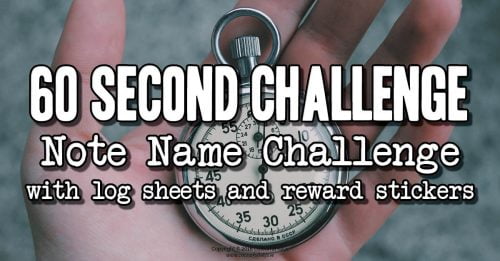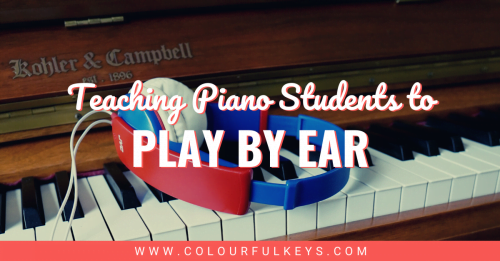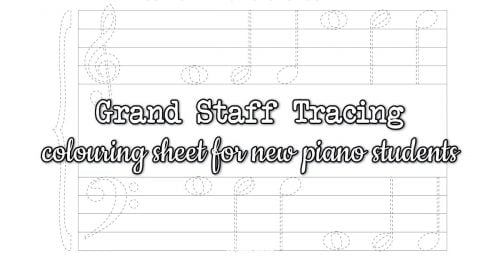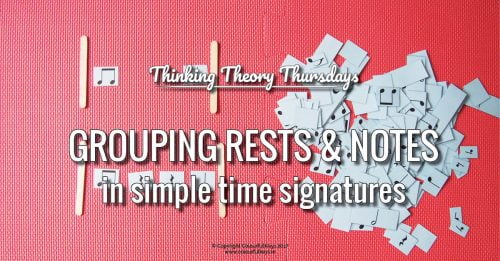Are your students confusing their fermatas with their tenutos? Do you hear groans of dread when you utter the words "music theory"? Do you perhaps even cringe a little bit yourself when you think about teaching music theory?!
I got you. On this page you'll find everything you need to make note stems stimulating and ritenutos refreshing.
This is a heck of a hub page so feel free to jump straight to the topic you currently need the most help with:
RHYTHM
Students who have been with me for several years will know that when I ask them "What is the most important aspect of music?", the answer I want is "Rhythm". We can have wrong notes, we can miss dynamics, but if the rhythm is off...? Well, that's a problem. So let's find out how to fix it.
NOTES & READING
Reading is one of the foundational aspects of music lessons, but the learning process doesn't always go as smoothly as we hope. In these articles, discover my tried-and-tested tactics for turning your students into fantastically fluent readers.
EAR TRAINING
Ah, aural work. Too often it's relegated to the last few minutes of a lesson before an exam, but it can (and should!) be so much more than that. Make ear training and singing a regular part of your lessons, and your students will reap the benefits for years to come.
SCALES
Scales! My favourite part of every piano lesson. Seriously, I'm not joking. If you learn the magic of teaching scales in varied ways and employing improvisation techniques to bring them to life – you can learn to love 'em too.
CHORDS
Chords are the foundation of much of the music students are listening to today, and they shouldn't be the exclusive property of guitarists. Young pianists can be the life of the singalong party too if we give them these skills.
NOTATION
Yuck. If there's one part of music theory that's hard to put a bow on it's all the rules, conventions and traditions that go into writing music notation accurately. But this stuff can be a really valuable step towards comprehensive understanding...and we can make it fun, I promise.
TERMS & SYMBOLS
Fortissississihuh? Allewhatnow? If your students tongues are tied up in the Italian, help them come to grips with the beautiful language of our music vocabulary using these fun and creative ideas.
HISTORY
Music history can end up with a dusty and stuffy air about it, but it doesn't have to. Learning about the great composers and the musical periods should be about making connections to the past that help us understand our present and future too.
OCCASIONS
Music games and improvisation activities can be a fun way to celebrate a special occasion or holiday in your studio. And when you bake in some music theory to spice up that cake, it's a recipe for deliciousness for sure. These free printable games and worksheets might just do the trick.
-
Access the Solfa Skyrocket course
Want to get started with solfa in your studio? Become a member of Vibrant Music Teaching and get instant access to the Solfa Skyrocket course along with loads of other lesson plans, resources and games.
Removing the Music Theory Stigma
Let's face it, music theory gets a bad rep. Many students (and even teachers) groan when it comes to that part of the lesson.
But why? Music theory is really just the language of music so what is it that makes it dry and dull?
Worksheets are mostly to blame for this, I think. Theory should not be synonymous with boring and repetitive worksheets.
Music Theory Needs a Rebrand
The first thing we need to do is give music theory a bit of a face-lift. For starters, let's stop calling workbooks "theory" and start calling them "written work" – 'cause that's really what we mean when we say that.
Then, let's apply the phrase "music theory" to a much more diverse palette of in-lesson and at-home activities. And, moreover, let's teach music theory in a way that scaffolds our students' learning and makes playing awesome music easier so that they see it as a helpful aid, not a chore.
Teaching music theory should represent a smorgasbord of tactics.
Fun Tactics for Teaching Music Theory
The best music theory teaching tactics are interactive and engaging. When we make these concepts come to life, our students are more likely to retain them for the long-term.
Music Theory Games
If this is your first time on the Colourful Keys blog then there's something you should know about me: I'm really passionate about games-based teaching. (But if you've been around even a wee while I'm sure you already know that!)
Games have the power not only to make music theory more fun but also to make our students' understanding of music theory more elastic.
Elastic or flexible knowledge can applied in many different contexts and used to figure out new concepts. Games provide a great opportunity for this type of learning since students naturally need to puzzle through part of the game by themselves and learn from the other players as they go.
Singing Music Theory
I'm no Kodály expert, but I definitely believe in the power of singing to teach us about music. The voice is our baked-in instrument and it's the most intuitive way to understand music theory.
Not every student will be willing to sing but through simple activities which you'll find here on the blog and gentle coaxing, most of them can be brought around if we start young enough. Don't let a student's (or your own) shyness discourage you from singing!
You can learn more about Kodály and the basics of solfa singing here.
Moving Music Theory
Most piano lessons are altogether too stationary in my opinion. In fact, I think we can agree that most of us are not moving enough in general. So why not use piano lessons as an opportunity to move together?!
Movement activities are one of the best ways to teach rhythm, beat, metre, pitch and a whole range of other topics. Teaching these things through movement rather than purely intellectually is more inclusive of learning differences and better for every learner overall.
If you want some quick and easy rhythm movement ideas, check out my book 'Rhythm in 5'.
Written Music Theory
Written music theory exercises still have their place in my studio. I believe that approaching music theory concepts from every angle is the best way to ensure thorough understanding.
You will see a few music theory worksheets listed above, but if you're after a more comprehensive curriculum you might like my 'Thinking Theory' books. They're all available with studio licenses so you can print parts or whole books as you need them for your students.
Making Music Theory Relevant
No matter what singing activities or fun games you plan into your lessons, please do not forget the final and crucial step: Make it relevant.
Most of us (and I would venture to say far fewer 9-year-olds) don't learn music theory for the sake of becoming musicologists. We learn music theory so that we can play beautiful music.
So, whatever you're doing and whatever stage your students are at – make those connections clear to them. Have discussions and discovery sessions based on the repertoire they're learning.
That's the surest route to having them fall in love with music theory.
-
Transform your approach to teaching music theory
Become a member of Vibrant Music Teaching and get instant access to worksheets, templates and resources to help make teaching music theory more interactive and engaging.









































